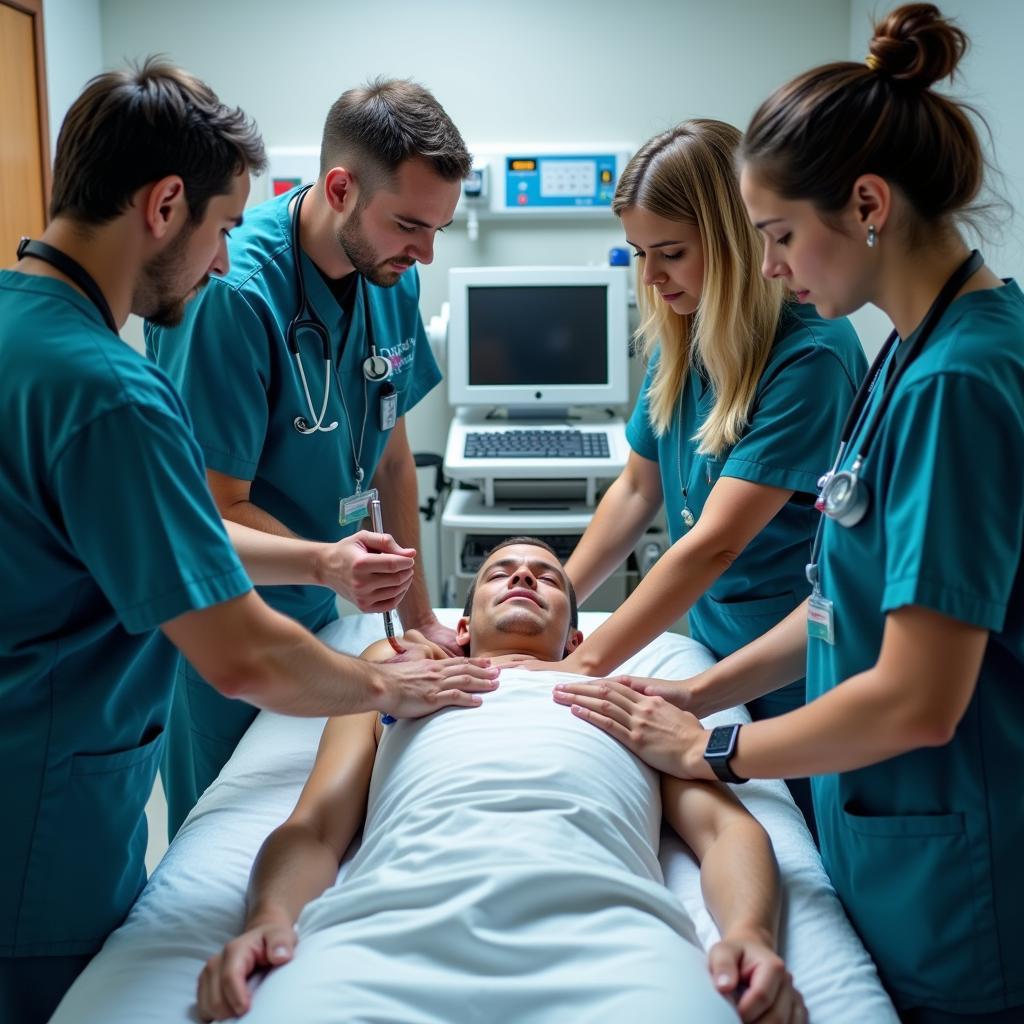When it comes to cardiac arrest, every second counts. The actions taken in those critical moments can mean the difference between life and death. Cardiopulmonary resuscitation (CPR) is a vital life-saving technique that helps maintain blood flow and oxygen to the brain and other vital organs during cardiac arrest. But did you know that there are distinct differences between CPR performed before arriving at the hospital (prehospital CPR) and CPR administered within a hospital setting (in-hospital CPR)?
 Prehospital CPR Scenario
Prehospital CPR Scenario
The Setting and Circumstances
The most obvious difference lies in the environment. Prehospital CPR often occurs in unpredictable and uncontrolled settings, such as homes, public places, or at the site of accidents. Bystanders, family members, or first responders are typically the first on the scene. In contrast, in-hospital CPR takes place within a controlled hospital environment, equipped with advanced medical technology and trained healthcare professionals.
This difference in setting impacts the resources and procedures available.
Techniques and Protocols
While the fundamental principles of CPR remain consistent—chest compressions and rescue breaths—the techniques and protocols can differ between prehospital and in-hospital settings.
- Prehospital CPR often emphasizes early recognition of cardiac arrest, activation of the emergency response system, and immediate initiation of chest compressions. The use of an automated external defibrillator (AED) is crucial in prehospital settings, as it can deliver an electric shock to restart the heart.
 AED Application during Prehospital CPR
AED Application during Prehospital CPR
- In-hospital CPR, on the other hand, involves a more comprehensive approach. Healthcare teams follow established Advanced Cardiac Life Support (ACLS) protocols, which include advanced airway management, intravenous medications, and defibrillation using a manual defibrillator. The emphasis is on coordinated teamwork, continuous monitoring, and rapid intervention.
The Role of Technology
In-hospital settings have access to advanced medical technology that can significantly impact CPR outcomes.
- Electrocardiogram (ECG) monitoring: Allows for continuous assessment of the heart rhythm and guides treatment decisions.
- Mechanical chest compression devices: Provide consistent, high-quality compressions, reducing rescuer fatigue and improving blood flow.
- Advanced airway management: Endotracheal intubation secures the airway, ensuring optimal oxygen delivery.
 In-Hospital CPR Team in Action
In-Hospital CPR Team in Action
Outcomes and Survival Rates
Survival rates for cardiac arrest are generally higher in hospitals due to the immediate availability of advanced medical care. However, the effectiveness of prehospital CPR in improving outcomes cannot be overstated. High-quality bystander CPR, particularly when combined with early defibrillation, can significantly increase the chances of survival and improve neurological outcomes.
What You Can Do
Learning CPR is a valuable skill that empowers you to make a life-saving difference. Contact your local Red Cross or American Heart Association for information on CPR certification classes in your area.
Expert Insight
“Early recognition of cardiac arrest and immediate initiation of CPR are critical factors in improving survival rates. Bystander CPR, even if not perfectly performed, can buy precious time until professional help arrives.” – Dr. Emily Carter, Emergency Medicine Physician
FAQs about CPR
1. Can I hurt someone by performing CPR?
It’s natural to worry about causing harm, but remember that doing something is always better than doing nothing when someone is in cardiac arrest. The benefits of CPR far outweigh the risks.
2. How long should I perform CPR?
Continue CPR until professional help arrives, the person shows signs of regaining consciousness, or an AED becomes available and instructs you to stop.
3. Do I need to be certified in CPR to perform it in an emergency?
While certification is always recommended, you do not need to be certified to perform CPR in an emergency situation.
4. What if I don’t feel confident in my CPR skills?
Even basic CPR, consisting only of chest compressions, can be life-saving. Don’t hesitate to act—your efforts could make all the difference.
5. Where can I find more information about CPR and first aid training?
You can contact your local Red Cross or American Heart Association for information on CPR and first aid training courses.
Need More Information?
For more information about emergency care and other services offered at San Jose Hospital, visit our website or contact our 24/7 hotline at 02437655121 or email us at [email protected]. We are located at Số 298 Đ. Cầu Diễn, Minh Khai, Bắc Từ Liêm, Hà Nội, Việt Nam.